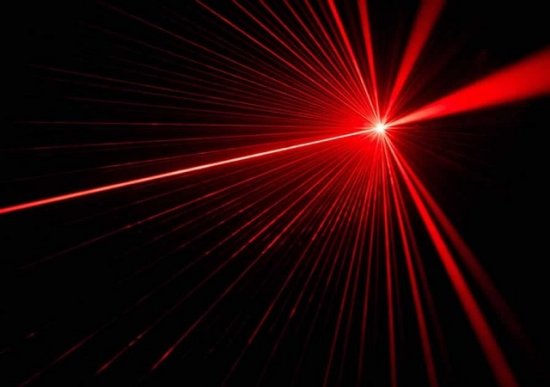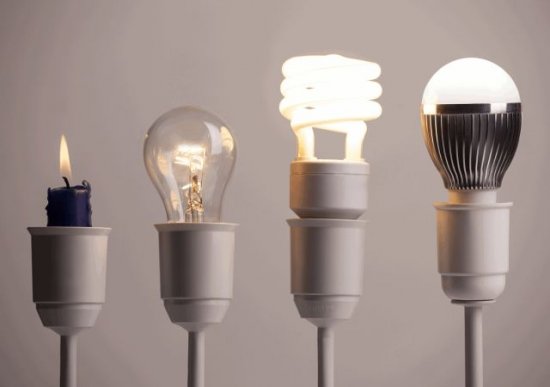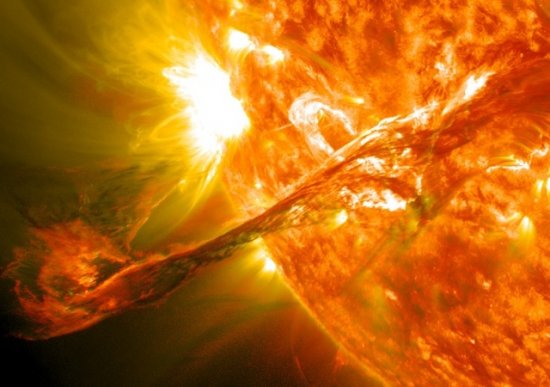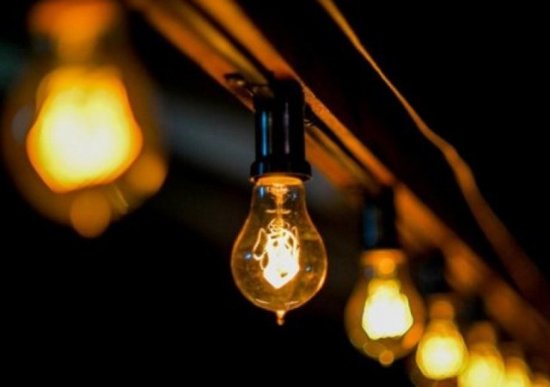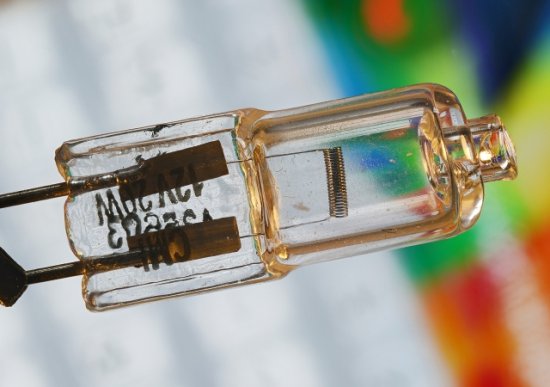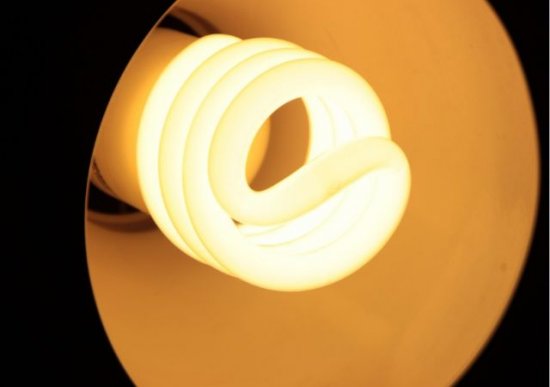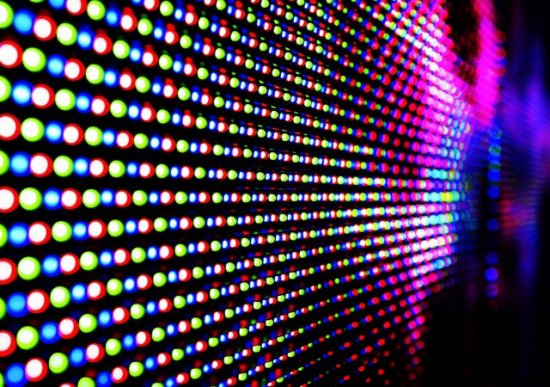Sources of optical radiation
Sources of optical radiation (in other words, sources of light) are many natural objects, as well as artificially created devices in which certain types of energy are converted into energy electromagnetic radiation with a wavelength of 10 nm to 1 mm.
In nature, such sources, which have long been known to us, are: the sun, stars, lightning, etc. As for artificial sources, depending on what process leads to the appearance of radiation, whether it is forced or spontaneous, it is a possibility for selecting coherent and incoherent sources of optical radiation.
Coherent and incoherent radiation
Lasers refer to sources of coherent optical radiation. Their spectral intensity is very high, the radiation is characterized by a high degree of directionality, it is characterized by monochromaticity, that is, the wavelength of such radiation is constant.
The majority of sources of optical radiation are incoherent sources, the radiation of which is the result of the superposition of a large number of electromagnetic waves emitted by a group of many elementary emitters.
Artificial sources of optical incoherent radiation can be classified according to the type of radiation, according to the type of energy converted into radiation, according to the method of converting this energy into light, according to the purpose of the source, according to belonging to a certain part of the spectrum (infrared, visible or ultraviolet), depending on the type of construction, the way of use, etc.
Light parameters
Optical radiation has its own light or energy characteristics. Photometric characteristics include: radiant flux, luminous flux, light intensity, brightness, luminance, etc. Continuous spectrum sources are distinguished by their brightness or color temperature.
Sometimes it is important to know the illumination produced by the source, or some non-standard characteristic, for example photon flux. Pulse sources have a certain duration and shape of the emitting pulse.
Luminous efficiency, or spectral efficiency, determines how efficiently the energy delivered to the source is converted into light. Technical characteristics, such as input power and energy, dimensions of the luminous body, radiation resistance, distribution of light in space and service life, characterize the artificial sources of optical radiation.
Sources of optical radiation can be thermal with an equilibrium heated luminous body in a condensed state, as well as luminescent with a non-uniformly excited body in any aggregate state. A special type are plasma sources, the nature of the radiation in which depends on the parameters of the plasma and the spectral interval, and here the radiation can be either thermal or luminescent.
Thermal sources of optical radiation are distinguished by a continuous spectrum, their energy characteristics obey the laws of thermal radiation, where the main parameters are the temperature and the emissivity of a luminous body.
With a factor of 1, the radiation is equivalent to the radiation of an absolute black body near the Sun with a temperature of 6000 K. Artificial heat sources are heated by electric current or by the energy of a chemical combustion reaction.
The flame when burning a gaseous, liquid or solid combustible substance is characterized by a continuous spectrum of radiation with a temperature reaching 3000 K due to the presence of solid filament microparticles. If such particles are absent, the spectrum will be banded or linear, typical of gaseous combustion products or chemicals intentionally introduced into the flame for spectral analysis.
Design and application of heat sources
Signaling or lighting pyrotechnics, such as rockets, fireworks, etc., contain compressed compositions containing combustible substances with an oxidizer. Sources of infrared radiation are usually ceramic or metal bodies of various sizes and shapes that are heated by a flame or by catalytic combustion of gas.
Electric emitters of the infrared spectrum have tungsten or nichrome spirals, heated by passing a current through them and placed in heat-resistant sheaths, or immediately made in the form of spirals, rods, strips, tubes, etc. — from refractory metals and alloys, or other compositions: graphite, metal oxides, refractory carbides. Emitters of this type are used for space heating, in various studies and in industrial heat treatment of materials.
For infrared spectroscopy, reference emitters in the form of rods, such as Nernst pin and Globar, are used, characterized by a stable dependence of emissivity on temperature in the infrared part of the spectrum.
Metrological measurements involve the study of emissions from absolute blackbody models where the equilibrium emissivity depends on temperature; Such a model is a cavity heated to temperatures up to 3000 K, made of refractory material of a certain shape with a small entrance.
Incandescent lamps are the most popular heat sources of radiation in the visible spectrum today. They are used for the purpose of lighting, signaling, in projectors, projectors, in addition, they act as standards in photometry and pyrometry.
There are more than 500 standard sizes of incandescent lamps on the market today, ranging from miniature to powerful floodlight lamps. The filament body is usually made in the form of a tungsten filament or spiral and is enclosed in a glass flask filled with an inert gas or vacuum. The service life of such a lamp usually ends when the filament burns out.
Incandescent lamps are halogen, then the bulb is filled with xenon with the addition of iodine or volatile bromine compounds, which provide a reverse transfer of vaporized tungsten from the bulb — back to the filament body. Such lamps can last up to 2000 hours.
The tungsten filament is mounted here inside a quartz tube heated to maintain the halogen cycle. These lamps work in thermography and xerography and can be found almost anywhere that ordinary incandescent lamps serve.
In electric light lamps, the source of optical radiation is the electrode, or rather, the incandescent region of the cathode during an arc discharge in an argon-filled lamp bulb or outdoors.
Fluorescent sources
In luminescent sources of optical radiation, gases or phosphors are excited by the flow of photons, electrons or other particles or by the direct action of an electric field, which under these circumstances become sources of light. The emission spectrum and optical parameters are determined by the properties of the phosphors, as well as by the excitation energy, electric field strength, etc.
One of the most common types of luminescence is photoluminescence, in which the radiation spectrum of the primary source becomes visible. The ultraviolet radiation of the discharge falls on the phosphor layer, and the phosphor under these conditions emits visible light and near ultraviolet light.
Energy-saving lamps are simply compact fluorescent lamps based on this effect. Such a 20 W lamp gives a luminous flux equal to the luminous flux of a 100 W incandescent lamp.
Cathode-ray tube screens are cathodoluminescent sources of optical radiation. The phosphor coated screen is excited by a beam of electrons flying towards it.
LEDs use the principle of injection electroluminescence on semiconductors. These optical radiation sources are manufactured as discrete products with optical elements. They are used for indication, signaling, lighting.
Optical emission during radioluminescence is excited by the action of decaying isotopes.
Chemiluminescence is the conversion into light of the energy of chemical reactions (see also types of luminescence).
Flashes of light in scintillators excited by fast particles, transient radiation, and Vavilov-Cherenkov radiation are used to detect moving charged particles.
Plasma
Plasma sources of optical radiation are distinguished by a linear or continuous spectrum, as well as energy characteristics that depend on the temperature and pressure of the plasma, occurring in an electric discharge or in another method of plasma production.
The radiation parameters vary in a wide range, depending on the input power and the composition of the substance (see also gas discharge lamps, plasma). The parameters are limited by this power and material resistance. Pulsed plasma sources have higher parameters than continuous ones.

